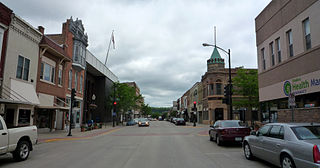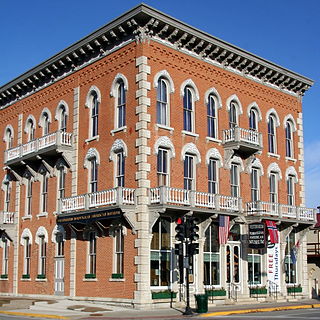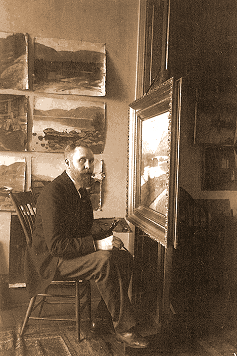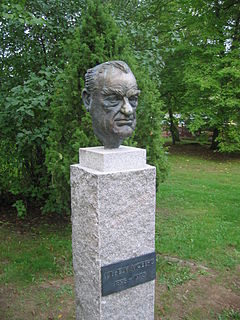
Genealogy is the study of families, family history, and the tracing of their lineages. Genealogists use oral interviews, historical records, genetic analysis, and other records to obtain information about a family and to demonstrate kinship and pedigrees of its members. The results are often displayed in charts or written as narratives. The field of family history is broader than genealogy, and covers not just lineage but also family and community history and biography.

Winneshiek County is a county located in the U.S. state of Iowa. As of the 2020 census, the population was 20,070. The county seat is Decorah.

Decorah is a city in and the county seat of Winneshiek County, Iowa, United States. The population was 7,587 at the time of the 2020 census. Decorah is located at the intersection of State Highway 9 and U.S. Route 52, and is the largest community in Winneshiek County.

Norwegian Americans are Americans with ancestral roots in Norway. Norwegian immigrants went to the United States primarily in the latter half of the 19th century and the first few decades of the 20th century. There are more than 4.5 million Norwegian Americans, according to the most recent U.S. census,; most live in the Upper Midwest and on the West Coast of the United States. Norwegian Americans are currently the 10th-largest European ancestry group in the United States.
FamilySearch is a nonprofit organization and website offering genealogical records, education, and software. It is operated by the Church of Jesus Christ of Latter-day Saints, and is closely connected with the church's Family History Department. The Family History Department was originally established in 1894 as the Genealogical Society of Utah (GSU) and is the largest genealogy organization in the world.

Vesterheim Norwegian-American Museum in Decorah, Iowa is the National Norwegian-American Museum and Folk Art School, with over 33,000 artifacts, 12 historic buildings, and a library and archives. This treasure showcases one of the most extensive collection of Norwegian-American artifacts in the world and highlights the best in historic and contemporary Norwegian folk and fine arts. Some of its buildings are on the National Register of Historic Places.

The Wisconsin Historical Society is simultaneously a state agency and a private membership organization whose purpose is to maintain, promote and spread knowledge relating to the history of North America, with an emphasis on the state of Wisconsin and the trans-Allegheny West. Founded in 1846 and chartered in 1853, it is the oldest historical society in the United States to receive continuous public funding. The society's headquarters are located in Madison, Wisconsin, on the campus of the University of Wisconsin–Madison.
Nordic Fest is a weekend festival held annually in Decorah, Iowa, to commemorate the traditional customs and culture of Scandinavian countries, especially Norway. The event always occurs over the last weekend in July and often draws estimated crowds of 50,000 to 75,000.

Ulrik Vilhelm Koren was a Norwegian-American author, theologian and church leader. A pioneer Lutheran minister, he played a significant role in the development of the spiritual and intellectual development of Norwegians in America. Ulrik Vilhelm Koren has been called the "patriarch of Norwegian American Lutherans."
Per Lysne was a Norwegian-American artist most associated with bringing the traditional Norwegian folk art of Rosemåling to the United States.

Realf Ottesen Brandt was an American Lutheran minister.
Per Ivarson Undi, also known as Peter Iverson, was an early Norwegian-American homesteader in Wisconsin Territory.
Gerhard Brandt Naeseth was an American librarian and genealogist who specialized in the field of Norwegian-American immigration.

Herbjørn Nilson Gaustå also Herbjorn Gausta was an American artist who is best known for his landscapes, portraits, and scenes from rural settings. He left an early record of immigrant life in his portraits and paintings and helped establish a place for art in the culture of Norwegian-Americans.

Swedish Emigrant Institute was a research center and museum designed to preserve records and memorabilia relating to Swedish-American migration.
Sigvald Asbjørnsen was a Norwegian-born American sculptor.
Brynild Anundsen was a Norwegian-American newspaper editor and publisher. He was the founder and publisher of Decorah Posten, a Norwegian language newspaper.
Hans Borchsenius was an American politician and newspaperman.
A local history book, is a Norwegian publication genre describing the history and population of one or more rural settlements. Many local history books feature a short history of each farm and a chronology of owners dating back several generations or centuries. Norwegian local history books have usually been published under the auspices of or in collaboration with the municipality.










